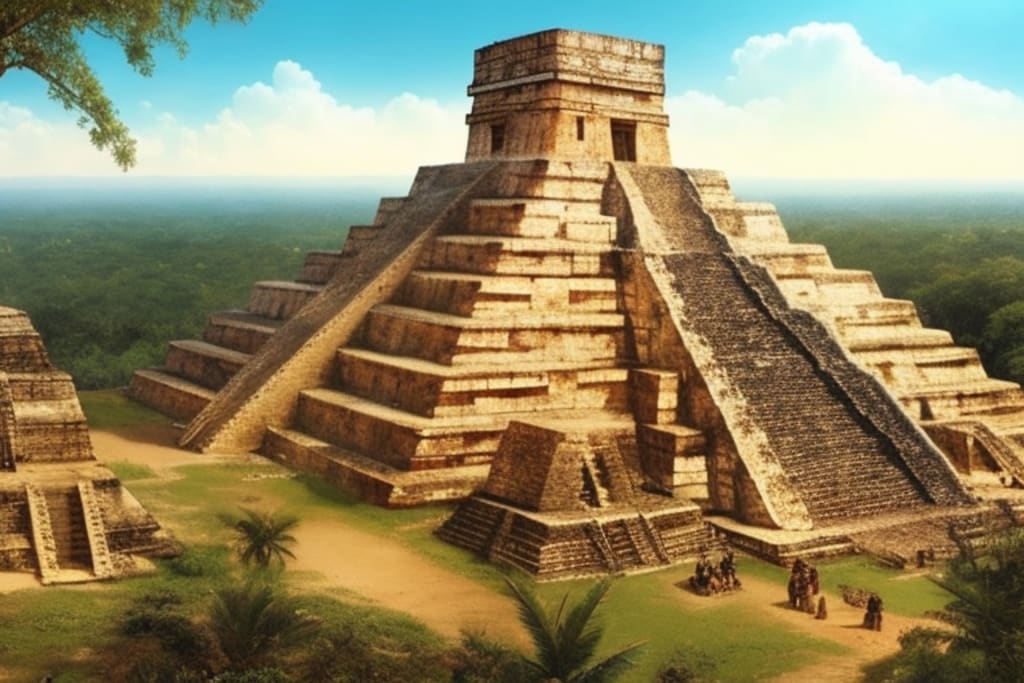The Maya Civilization Revealed to Be More Advanced Than Previously Thought
Unveiling the Hidden Marvels: A Journey through the Advanced Realms of the Mayan Civilization

The Maya Civilization Revealed to Be More Advanced Than Previously Thought
Consider the significant events of the first millennium CE, a span of a thousand years in human history that witnessed the rise and fall of the Roman Empire and the transition to the intense Middle Ages. It was also the apex period of the Mayan civilization in Mesoamerica. However, recent cutting-edge technological advancements have reshaped our understanding of history.
Early Mayan Civilization Discoveries
Archaeologists have unearthed compelling evidence suggesting that the Mayan civilization may have had its origins much earlier than traditionally believed. From the outset, their civilization appears to have been far more intricate than previously assumed. To delve deeper into this revelation, one must embark on a journey into the dense rainforests of Guatemala.
The Remarkable Mayan Roadways
These rainforests, though formidable and challenging for archaeologists to navigate, conceal remarkable discoveries. Contrary to expectations, expansive white-painted roads, measuring 130 feet in width, reminiscent of structures found in places like Portugal, England, or the United States, have been uncovered. These roads, approximately half the size of an American football field, form a 110-mile network believed to predate the first documented Mayan ruins.
Mayan Superhighways and Settlements
Termed the world's first superhighways, these roadways, sometimes traversing swampy terrain and elevated at points, are thought to have connected around 964 settlements in a vast interconnected web. This challenges the conventional notion that the Mayan preclassic period (1, to 350 BCE) comprised small tribal settlements. The sheer manpower and engineering prowess required for such construction are staggering.
Mayan Causeways: A Engineering Marvel
Scholars propose that these causeways were built using a similar methodology employed in constructing Mayan pyramids, employing a mixture of mud, quarry stone, and multiple layers of limestone.
Technological Advances in Mayan Discovery
This groundbreaking revelation owes its discovery to LiDAR imaging technology, akin to the use of sonar to map ocean beds. By utilizing laser systems, researchers can penetrate thick forest canopies, offering a kind of X-ray vision to uncover hidden Mayan infrastructure.
Continued Rediscovery of Lost Mayan Cities
While the rediscovery of lost Mayan cities began in the mid-20th century, recent advancements continue to unveil the sophistication of Mayan civilization.
Overview of Mayan Civilization
Stepping back for context, the Mayans were among the most significant pre-Columbian civilizations in the Americas. At its zenith, the Mayan civilization boasted over 40 cities with a population in the millions, spanning Mexico's Yucatan Peninsula, Guatemala, and Belize. Agriculture was central to their survival, and they ingeniously developed complex irrigation systems to cope with the challenging Yucatan Peninsula terrain. In addition to their prowess in pyramid construction, the Mayans had an advanced astronomical system, predicting planetary positions and eclipses with remarkable accuracy.
Key Mayan Sites and Their Significance
Examining some of their key sites, Tikal, located in the heart of the Guatemalan jungle, served as the capital of the ancient Mayan Empire. Comprising 12,000 buildings, including the towering North Acropolis, Tikal rivaled cities like London or New York in importance. Chichen Itza, a 10-hour drive from Tikal, presents one of the best-preserved pyramids globally, standing for over 1,500 years and once home to 35,000 people. Additionally, the lost city of Palenque, believed to have hosted over 6,000 people, boasts unusual discoveries, including the tomb of the Red Queen.
Unraveling the Mystery of Mayan Decline
The mystery surrounding the decline of the Mayan civilization has long puzzled researchers. Recent findings, analyzing radiocarbon data from sites like Coba, suggest a gradual decline marked by waves of social instability and political crises rather than a sudden collapse. These events contributed to the deterioration of Mayan city centers and the erosion of the population.
In Conclusion: A Reevaluation of Mayan Civilization
In conclusion, the evolving narrative of the Mayan civilization, propelled by technological advancements and ongoing archaeological discoveries, challenges previous assumptions and reveals a civilization far more advanced than initially thought.
About the Creator
Enjoyed the story? Support the Creator.
Subscribe for free to receive all their stories in your feed. You could also pledge your support or give them a one-off tip, letting them know you appreciate their work.





Comments
There are no comments for this story
Be the first to respond and start the conversation.